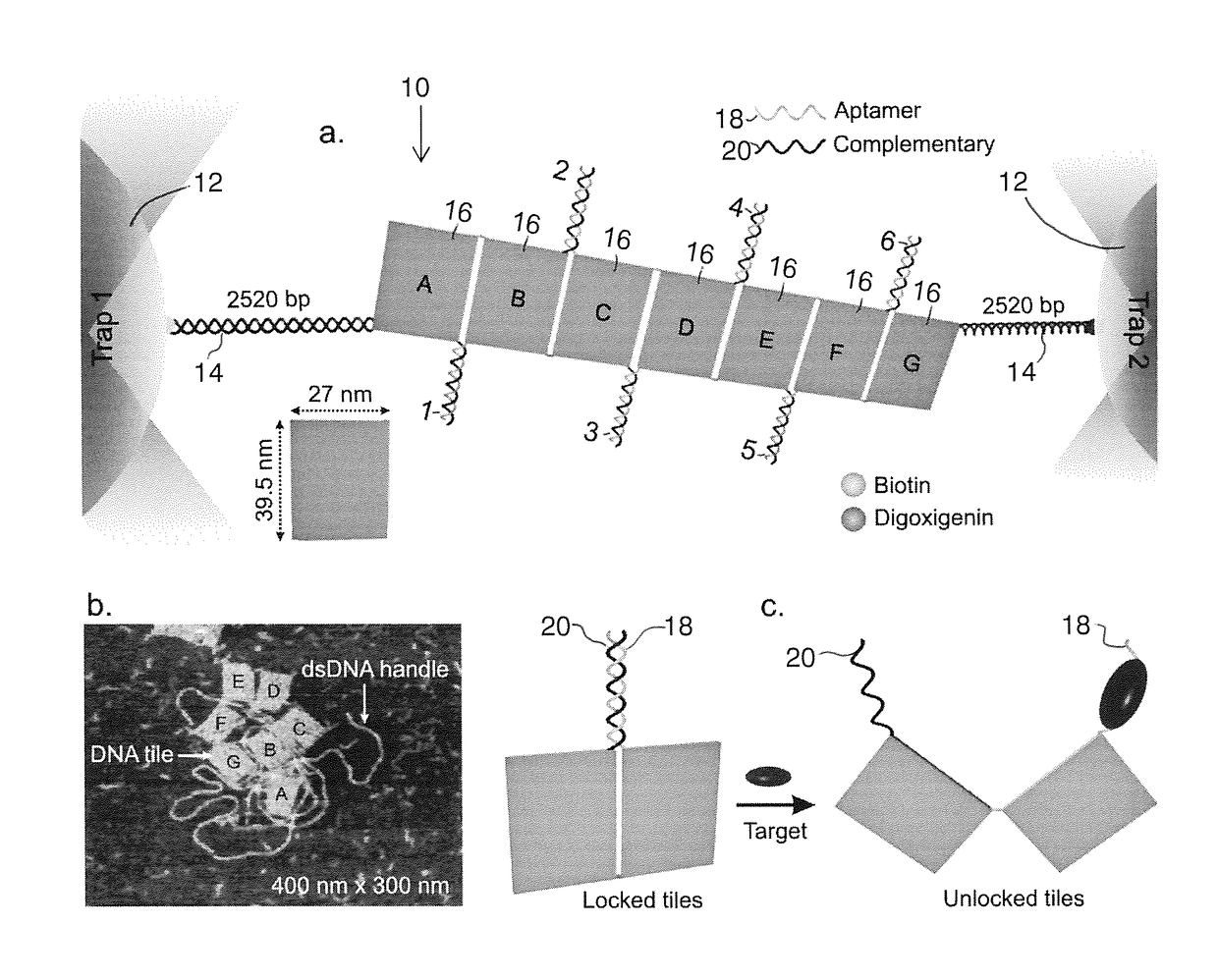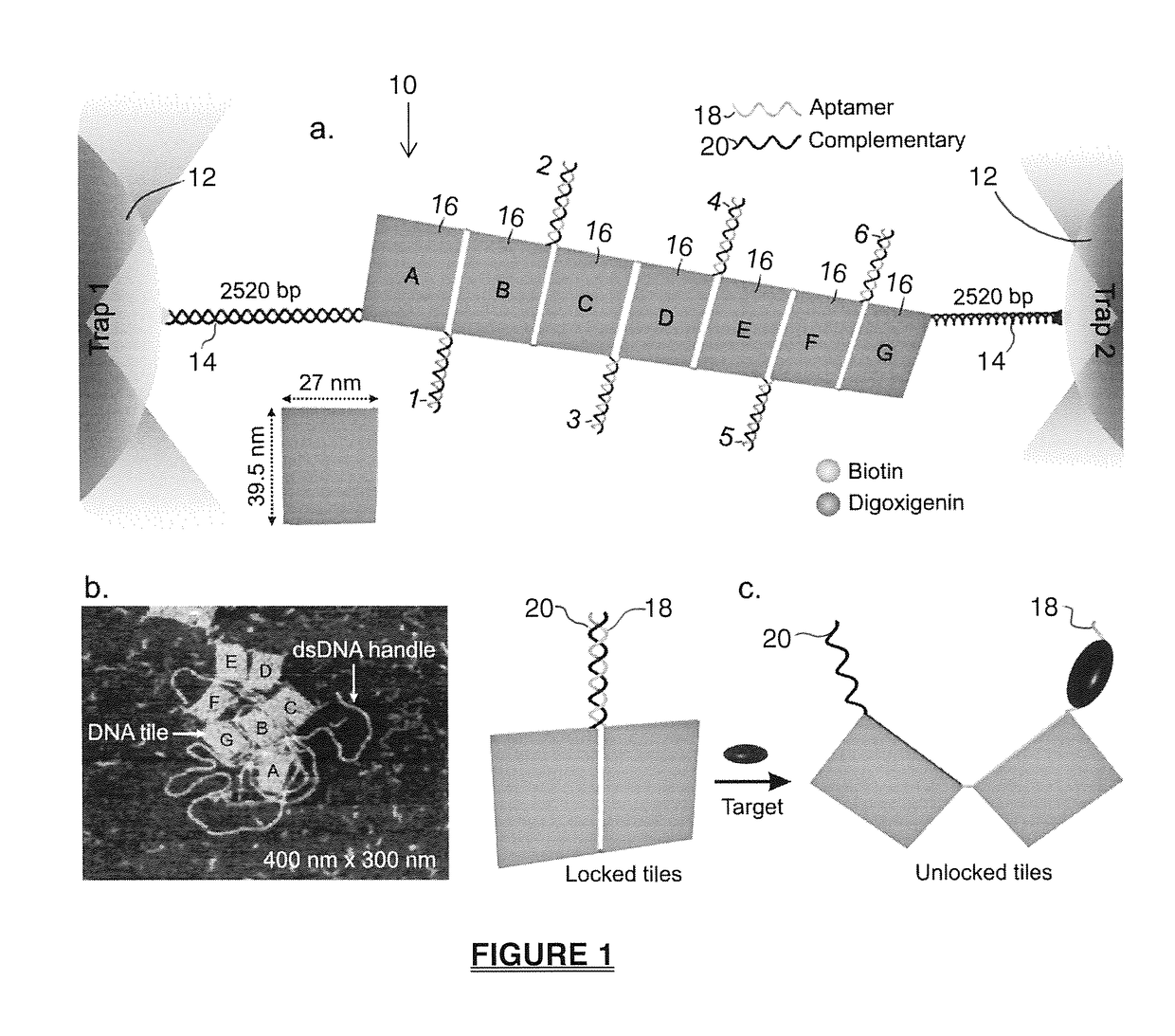Mechanochemical platform and sensing methods using DNA origami nanostructures
a nanostructure, mechanochemical technology, applied in the field of biosensing platform and mechanism, can solve the problems of low throughput of sensing and unexplored biosensing applications of dna origami structures
- Summary
- Abstract
- Description
- Claims
- Application Information
AI Technical Summary
Benefits of technology
Problems solved by technology
Method used
Image
Examples
Embodiment Construction
[0013]To prepare a DNA origami structure, a long single-stranded DNA scaffold can be folded into a predesigned 2D or 3D DNA nanostructure aided by short DNA staples. FIG. 1a.-c. illustrates the Experimental set-up for a DNA origami based mechanochemical sensing using optical tweezers (not to scale). A 7-tile 2D DNA origami nanoassembly shown at 10 is tethered between two optically trapped beads 12 through dsDNA handles 14 modified with a terminal digoxigenin or biotin. Each tile 16 of the origami nanostructure has a dimension of 39.5×27 nm2. The adjacent tiles are locked by an aptamer DNA 18 (and its complementary strand 20. FIG. 1b. is an AFM image (400×300 nm2) of the origami nanoassembly depicting 7-tiles and two dsDNA handles. FIG. 1c. is an Illustration of the tile-unlocking due to the target binding to an aptamer lock. Binding of a target, (i.e., the thing being examined such as DNA, RNA or protein), to the aptamer induces the folding of the aptamer, which releases the complem...
PUM
| Property | Measurement | Unit |
|---|---|---|
| Fraction | aaaaa | aaaaa |
| Force | aaaaa | aaaaa |
| Nanoscale particle size | aaaaa | aaaaa |
Abstract
Description
Claims
Application Information
 Login to View More
Login to View More - R&D
- Intellectual Property
- Life Sciences
- Materials
- Tech Scout
- Unparalleled Data Quality
- Higher Quality Content
- 60% Fewer Hallucinations
Browse by: Latest US Patents, China's latest patents, Technical Efficacy Thesaurus, Application Domain, Technology Topic, Popular Technical Reports.
© 2025 PatSnap. All rights reserved.Legal|Privacy policy|Modern Slavery Act Transparency Statement|Sitemap|About US| Contact US: help@patsnap.com



